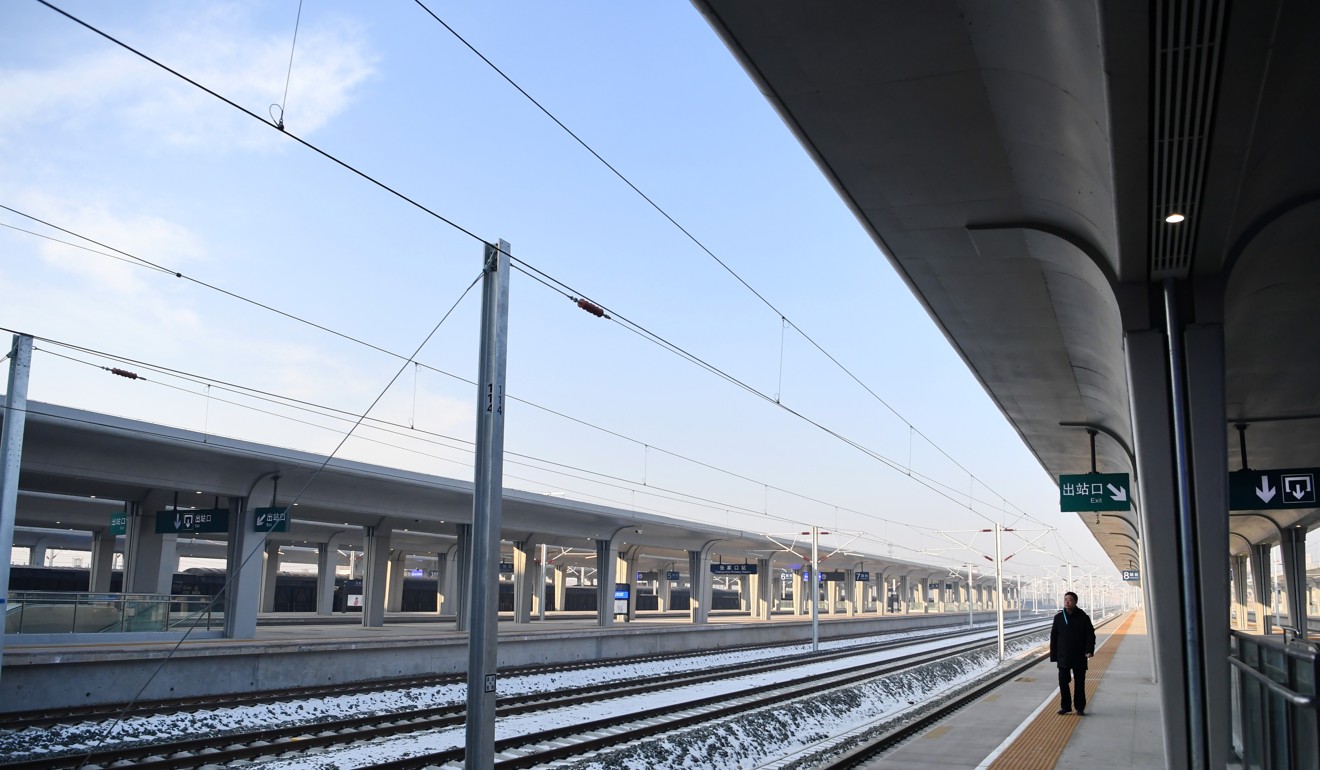
China in high-speed rail top gear with launch of line to Winter Olympics city
- The new services add to the 5,000km of high-speed rail rolled out across China this year
- Travel time from Beijing to Inner Mongolia to be cut dramatically, opening up prospects for tourism in the autonomous region
China is further extending its already sprawling high-speed rail network, launching more than 10 lines in the final days of the year.
The line is a major Olympic project and will cut the travel time between the national capital and Zhangjiakou, in the northern province of Hebei, from three hours to 47 minutes.
The 174km (108-mile) line has a maximum design speed of 350km per hour, and links up with a high-speed service to Lanzhou, in the northwestern province of Gansu.
It stretches westward, connecting with other high-speed routes across Shanxi, Hebei and the eastern part of Inner Mongolia.

With the introduction of the services, the trip from Beijing to Hohhot, capital of Inner Mongolia, is expected to take two hours and nine minutes, a fraction of the nine and a quarter hours it takes now.
The new service is expected to foster economic and social development between Inner Mongolia and the Beijing-Tianjin-Hebei region, a city cluster under construction, Shanghai-based news outlet The Paper reported.
Inner Mongolia is a popular tourist destination for urban visitors and the high-speed route will make day trips to the autonomous region possible.
Beijing spends big as it prepares for a costly 2022 Winter Olympics
On Sunday, the Ningxia Hui autonomous region in the country’s northwest marked the start of its first high-speed service. The 207km line connects three major provincial cities – Yinchuan, Wuzhong and Zhongwei – halving the time between Yinchuan and Zhongwei to 90 minutes.
China has launched 5,000km of new high-speed rail this year, bringing the national total to 35,000km, according to China Railway. The total is already twice the amount in the rest of the world combined.
China has promoted construction and financing of high-speed train projects in other developing countries and has plans to connect China to Singapore and Europe.

